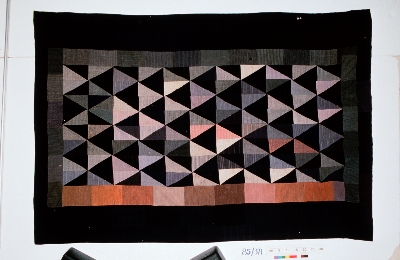Quilt No.758PHM - Powerhouse Museum

The centre field is bounded by two strip-pieced borders at top and bottom, and three down each side. These are sewn from rectangles, using light pink/brown tones for the inner border and darker colours for the...
The quilt was made by Caroline Mary West about 1930 on a property near Trundle NSW in about 1930. It was handed down through the women of the family, to her grandson Mr. Ian Foster of Newport. Ian Foster gave the quilt to the Powerhouse Museum in 1985.
"The quilt was made by Mrs. Caroline Mary West (nee Bray) in about 1930. Caroline was born on the 14 June 1872 and married a grazier, Everett Pearson West, in 1904. They lived on a property near Trundle, in the centre-west of New South Wales and had six children, four boys and two girls between 1905 and 1915. The quilt is thought to have been made in the 1920s or early 1930s during the Depression. The woollen suiting fabrics used to make the quilt were obtained from Tom Ellis, the local tailor. Caroline Mary West died on 19 March 1947." [PHM]
Related Quilts:
2057 x 1220mm
3759 x 2286mm






